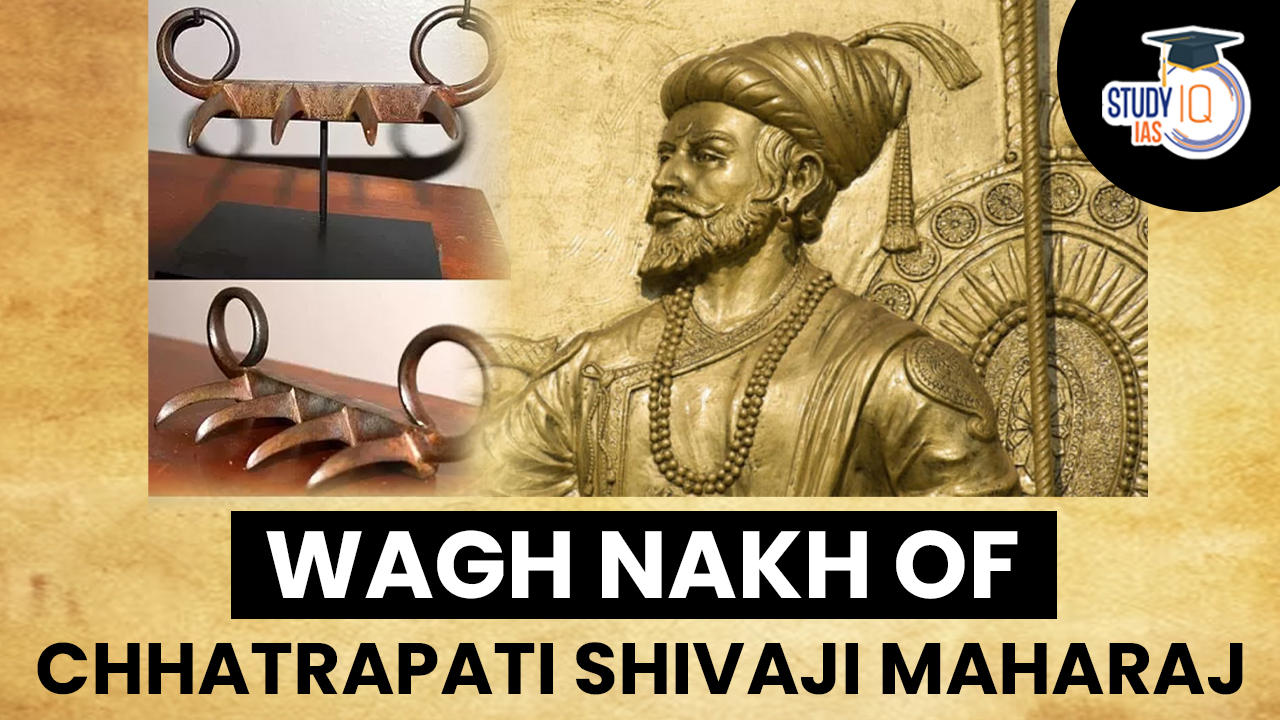Table of Contents
Wagh Nakh of Chantrapati Shivaji Maharaj
The UK authorities have agreed to return the ‘Wagh Nakh’, a dagger-shaped tiger claw which was used by Chhatrapati Shivaji Maharaj to kill Bijapur Sultanate’s general Afzal Khan in 1659. Later this month, State Minister for Cultural Affairs Sudhir Mungantiwar will travel to London’s Victoria and Albert Museum to formally seal the return by signing an MoU. Additionally to the signing of the Memorandum of Understanding, attempts will be made to return other artefacts, like Shivaji’s Jagadamba sword, which is now on exhibit in the UK.
What is Wagh Nakh?
The Wagh Nakh is a special dagger that may be concealed in the hand or held between the fingers. It contains four or five curved blades that are attached to a crossbar or glove and are designed to sever muscle and skin. This dagger’s name, Wagh Nakh, which means “tiger’s claw” in English, is supposed to have been influenced by the weapons of huge animals. Due to its connection to the Maratha Emperor Chhatrapati Shivaji Maharaj, the Wagh Nakh dagger has enormous historical significance for India, especially for Maharashtra.

During an important battle with the Bijapur army in 1659, Shivaji Maharaj made the decision to meet Afzal Khan under the guise of diplomacy. However, he secretly carried a dagger in his left sleeve and concealed the Wagh Nakh in his right hand because he was aware that Khan intended to assassinate him during the meeting.
Wagh Nakh of Shivaji Maharaj
The Wagh Nakh was connected with the Maratha Empire of the 17th and 18th centuries, and the majority of instances appear to have come from the important Indian cities of Kolapore, Satara, and Gwalior in Maharashtra, Madhya Pradesh, and Madhya Pradesh respectively (as is the case with this example). “Chhatrapati Shivaji Maharaj’s Wagh Nakh are a priceless historical resource that is linked to the feelings of the state’s residents.
Shivaji killed Khan in 1659 by using a sharp iron weapon called a “wagh nakh,” which was formed like a tiger’s claws. At the foot of Pratapgad fort in the present-day Satara district, where the two converged, this took place. Since then, the incident has entered folklore. Check all about the Maratha Empire here in detail.
Wagh Nakh Source of Inspiration
The Marathas used guerrilla warfare to defeat Afzal Khan’s formidable army. In 1659, Shivaji used a “wagh nakh,” a sharp iron weapon shaped like tiger claws, to slay Khan. At the foot of Pratapgad fort in the present-day Satara district, where the two converged, this took place. Since then, the incident has entered folklore. We find inspiration and vigour in the wagh nakh. The 350th anniversary of Shivaji Maharaj’s coronation falls this year as well.





















 WhatsApp
WhatsApp